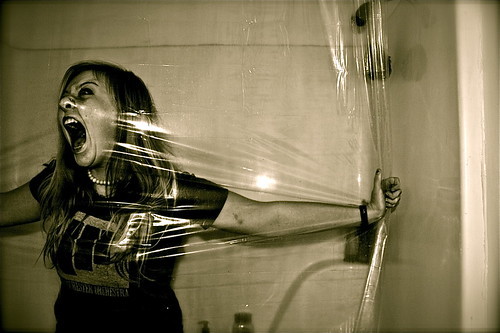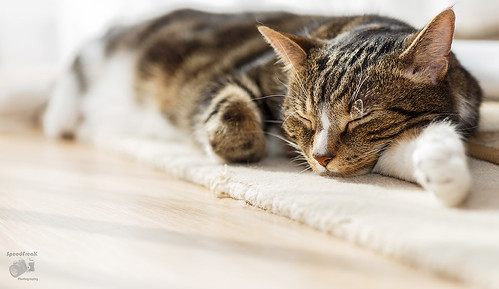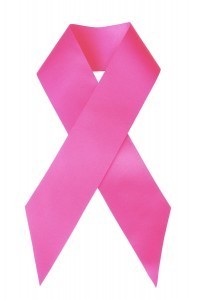Sheila Flaherty's Blog
April 26, 2021
The Weight of Sorrow
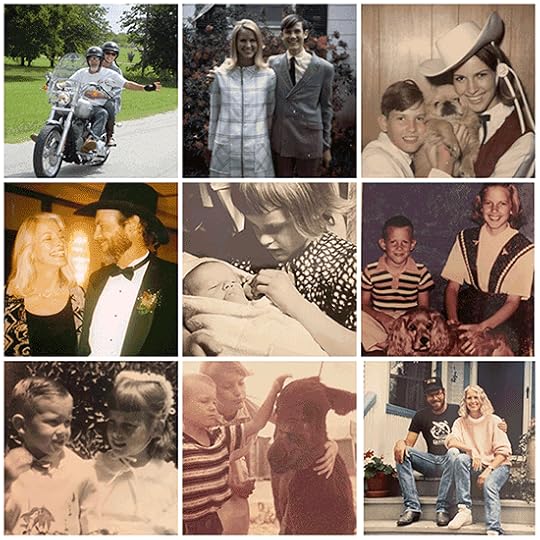
Oh, brother, brother, brother���
I know you’ve been hangin’ on a long time
���But I love you like no other���
Oh, brother of mine
~ Carole King���
My baby brother, Joe, died early Friday morning, March 26th. It wasn���t totally unexpected���he���d been in hospice since sometime last July and very ill for four years. Still, the phone call was something I���d feared and dreaded.
The call came mid-morning that Friday. I didn���t recognize the number, so I didn���t pick up, but as soon as I listened to the message, I knew. It was my niece Ashley���s husband, Josh, asking me to call him back. I steeled myself for the worse possible news as I called. And I got it.
I cried all day Friday as I reached out to my friends and family with the news���texting to ask if they could talk. Talking when they could. Telling them what had happened if they weren���t available to talk. My cousin Larry immediately responded by FaceTime and our conversation was extremely comforting. And, I had the best of care from my partner, Jeff, who knows all too well the devastating pain of losing someone you love.
The day passed in a haze of grief. I searched through pictures to find those I felt best showed the love in our relationship throughout our lives. There are many more, but I chose the best, and my sweet Jeff put them together in a collage for me to post.
I went to bed early and slept hard throughout the night. In the morning I couldn���t move without pain. I felt like I���d been beaten. My legs were heavy and my arms hurt as though I���d struggled against something all night. It was then I truly understood the weight of sorrow. The heaviness of grief. The mind/body connection was indisputable.
Every day since Joe���s death, I still wake up feeling physically and emotionally battered. A month later, and I still can���t believe he���s gone. He gave the best hugs, ever, and I mourn the fact that I���ll never feel one again. I���ve suffered so many losses���my father, mother, beloved grandma, older half-brother, uncle, friends, and patients���but I���ve never before experienced such physical pain at the loss. At least not that I remember.
My good friend, Cathy, who has also lost a sibling, understood the crushing pain I���m feeling. Most of my other losses were expected losses. In the natural order of things, we are supposed to outlive our older family members. Joe was my baby brother, and, as a sibling, he was the witness to much of my life. The loss of that witness feels like being torn in two.
I was only five-and-a-half when Joe was born, so I have few memories of my life before him. I liked to tell Joe I���ve loved him all his life, but I���ve also loved him most of mine. When he was born I still remember my daddy sitting me down to gently tell me I didn���t get the baby sister I���d wanted, that I had a brother. My immediate response was that I���d really wanted a brother.
How I adored that baby! We were living in Army housing on the base at Fort Bragg, North Carolina, and I had a few friends I brought home to show him off to. I loved holding him and feeding him. Helping Mama take care of him.
As Joe grew older, he adored me, as well. Whenever I left the house, he wanted to go with me. When we lived in El Paso, Texas, I was ten and Joe was four. I had a friend named Eloise who lived nearby, and whenever I left to go play with her, Joe followed me down the street. When I promised I���d bring him something when I came home, he���d reluctantly turn around. I always kept my promise. Most times I only brought him an interesting rock or stick I found along the way, but he was always thrilled with whatever I gave him.
All the while we were young, Daddy was in the Army and we moved so many times. Our family didn���t really settle down in Mesquite, Texas (a suburb of Dallas) until the summer I turned fourteen and was entering 9th grade. I was always the shy, new girl, making only a few real friends along the way���and then always having to say ���goodbye.��� Joe and I were the constants in each other���s lives throughout those years. I remember many, many hours spent in the backseat of a Studebaker station wagon as we moved from state to state, or went on family vacations.
Other family members were always across the country. We had cousins we rarely ever saw. Cousins, like Larry, who grew up in California and who I���ve only gotten to know well in recent years. So, it was just me and Joe. Mama always worked 8 to 5 as a bookkeeper wherever we lived, so, beginning the middle of 6th grade, it became my responsibility to watch Joe after school.
Like any siblings, Joe and I fought and we got into trouble, but we were always ���thick as thieves.��� I remember one time we were tossing a small watermelon back and forth to each other in the living room. Mama told us to stop several times, but we didn���t���until we dropped the melon and it shattered on the carpet. After Mama sent us to our separate rooms, we sat in our respective doorways and rolled a ball back and forth to each other. Joe and I depended on each other to be there, and assumed we always would.
It was only after we moved to Mesquite that we each, finally, had our own friends. Although our age differences impacted us more, we were still close. But it was in Texas where our lives began to go in very different directions.
I had a terrible time adjusting to life and school in Mesquite, whereas Joe thrived when finally planted. My choppy school history left me without a solid educational foundation, so I was behind in most subjects and not a good student. Joe, entering 3rd grade, excelled. I was shy and awkward, Joe was outgoing and immediately had a friend group, some of whom he kept all his life. I was too tall and skinny, had thin unruly hair and acne, and wore braces. Joe was handsome, with thick, straight, dark hair, an unblemished complexion, and naturally straight, white teeth. I���d not yet discovered my talent for art and writing, whereas Joe quickly became proficient at playing the drums and even had his own band called ���The Clich��s��� for a couple years. Still, despite our differences, we spent as much time together as possible. I was proud of him.
When I left home after graduating high school, Joe was devastated. He visited me and I was back in the Dallas area after a few years, so we remained close. By the time he was in high school, I was the one he called whenever he had a problem. Joe was a rebellious teen and had a rough adolescence, at home, school, and in his relationships. I was his confidant through some very turbulent times.
Although we grew up in the same family and our parents stayed together through their own difficult times, it was in adulthood when our differences began to redefine our relationship. Joe was settled and grounded and happily at home in Texas. I, despite the pain I���d experienced being yanked around most my life (attending twenty-three schools by the time I graduated from high school), had what I called ���a gypsy soul.��� I was restless, hated Texas, and took every opportunity that came along to leave, although I always returned. When I came to Chicago for graduate school in 1982, I left Texas for good. Joe never left.
Over the past thirty-nine years, Joe and I visited each other, kept in touch by phone, and email, and text. I loved it when we were able to talk on the phone. Joe had a wicked sense of humor and could always make me laugh. He could also make me cry. Time and distance and misunderstandings and, finally, politics (and conspiracy theories) gradually eroded our relationship���almost to the breaking point.
Whenever Joe pulled back and disappeared from my life, I fought back. When he wouldn���t answer his phone, I left him long messages, pleading with him to please call me back. Using the power of text messaging, I sent him ���I love you notes��� and pictures and videos. When, after going into hospice last July 7th, Joe sent me a curt ���Goodbye��� text from what was to be his deathbed, I refused to accept it. I continued bombarding him with love texts until, finally, on December 28, he reached back. Our phone call was full of catching up and emotion and laughter and tears. The next morning he sent me a text telling me how much better he felt and saying ���I love you Doc and please don���t ever forget that I do even when I am stupid.��� I���ve printed it out and will keep it always.
The last time I talked to Joe was on his birthday, February 25. I called and he answered and we talked like nothing had ever come between us. I���ve forgiven him for all the ways he hurt me over the years, and I believe he forgave me, too. I am glad Joe is finally out of pain and at peace, and I will search for a way to celebrate his life that helps give me closure. As I write this I recognize there���s a certain poetry in our relationship here on earth having both begun and ended on his birthday. But I���ll continue to love him for the rest of my life and, depending on what happens after, maybe forever.
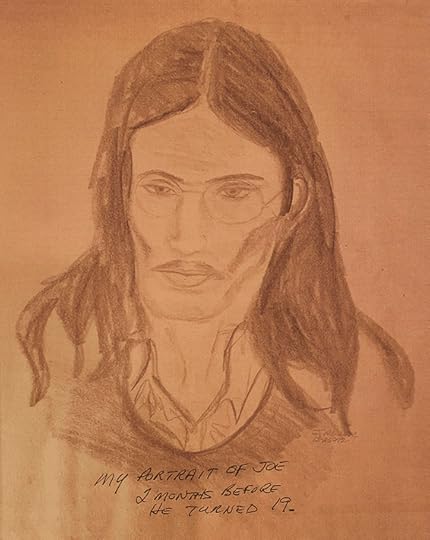
March 31, 2020
What this Shrink is Learning: How to Survive a Pandemic (#6) Managing Fear
“In the silence you don’t know, you must go on,
I can’t go on, I’ll go on.”
~Samuel Beckett
Anyone who’s not scared right now is either an innocent child, an adult in denial, or someone unclear on the concept of a pandemic. As shrinks say, “Fear is appropriate affect for what we’re going through.” Among so many other things, we’re afraid of the real and present danger of being infected with the virus. We’re afraid for ourselves, our families, our friends. We’re afraid of the unknown. And much is unknown.
Most of us have become hyper-vigilant. To a cough. To fatigue. To breathlessness on the stairs. To a hot flash in the night. Many people I know were sick in January or February with terrible, lingering, flu symptoms, even though they’d had their flu shots. Now they’re wondering if they had COVID-19. If so, are they immune? If so, did they infect another? If so, are their lungs now compromised? Too many questions and too few answers put us all on edge. The problem is, there are no clear, concrete answers. We’re in uncharted territory and uncertainty brings more fear.
I’ve been writing this post in my head for days, and avoiding sitting down to write it for just as long. I’m afraid, as well. Of course I am. And to sit down and put words on paper felt daunting. But I awoke early this morning thinking, This is the day. Even then, I avoided. And then felt my chest tightening and panic. Can I breathe? Do I have it? I made myself a cup of tea, then let it go lukewarm as I finally meditated for ten minutes. I was counting first, then felt grief welling up and I cried. Finally, I became aware of the birds chirping outside my window. The woodpecker busy on the catalpa in my front yard. And I thought, Life goes on. When I opened my eyes, I knew I could write.
As I’ve already said, fear is an appropriate response to what’s happening right now. It can help us comply with orders to Shelter in Place. It can help us to be mindful of safe practices such as thorough and frequent hand washing and social distancing. It can help save our lives and those of the people we love.
Fear, however, can also be dangerous. It can be immobilizing. It can manifest in panic attacks. It can turn into real paranoia. It can ignite fight or flight responses. It can stress the body in ways that put us at risk for stroke or heart attacks. It can lead us to unhealthy coping mechanisms such as overeating and/or consuming too much alcohol. Combined with anxiety and depression, fear can create a lethal cocktail that tips one over into suicidal or homicidal ideation.
So, how do we manage fear in appropriate and healthy ways? First of all, we acknowledge it. Speak it aloud to ourselves, “I am terrified!” Write about it in our journals. Share it with others in ways that don’t spark more fear, but help unite us in our humanity. We’re all in this together.
I’m continuing to observe what helps and doesn’t help me. Spending too much time alone in my head is never good. As author Anne Lamott says, “My mind is like a bad neighborhood. I try to never go there alone.” When I find myself going to worst case scenarios, I try to break the loop before it starts. We have enough to be anxious about in the here-and-now without adding anticipatory anxiety to the mix.
More than ever, I’m finding work fulfilling, because, to do my job and help others, I have to get out of my own head. Moving my body also helps keep anxiety and fear at bay, so I continue to exercise online. I’m also connecting with others and participating in online social activities over FaceTime, Skype, or Zoom. Coffee dates and happy hours over Zoom can bring us face to face with our friend and family members in safe ways—decreasing our feelings of total isolation. I’m grateful I have the ability to do these things.
Continue to look for activities that feed your soul and make time for them. Express yourselves through art, writing, music, cooking. Connect with others, even if only over the phone or by text. Share what works for you with others. If possible, avoid whatever makes things worse.
We can’t make our fears go away, so don’t even try. But, by using them as guidelines to healthier practices, we can control them and empower ourselves. And, in the time of corona, self-empowerment is critical for survival.
Years ago, a patient shared this quote with me. It’s so appropriate now, I’ve printed it out and hung it on my refrigerator along with my photos of family and Ada’s art.

I must not fear. Fear is the mind-killer. Fear is the little-death that brings total obliteration. I will face my fear. I will permit it to pass over me and through me. And when it has gone past I will turn the inner eye to see its path. Where the fear has gone there will be nothing. Only I will remain.
~ Frank Herbert, Dune
Thanks, again, so much, to all of you who are reading my posts. I’m honored that you’re following me, and grateful my words are helping. Stay home and stay safe. We are all in this together.
Blessings, gratitude, and much love to all of you.
March 27, 2020
What this Shrink is Learning: How to Survive a Pandemic (#5) Protecting Our Sleep is Critical
“Dreaming permits each and every one of us
to be quietly and safely insane every night of our lives.”
~William C. Dement
If you ask people how they’re doing these days, the most common answer is, “I’m tired.” Reality has set in—this quarantine isn’t temporary. We’re realizing it will likely be months before we’re in the clear. Anxiety levels are up and lack of sleep is becoming a major issue for most of us. Depression is setting in for many. Both anxiety and depression can cause major interruptions in sleep—trouble going to sleep, staying asleep, or both. A common problem is our minds racing and preventing us from going to sleep in the first place, or racing when we wake in the night so we can’t go back to sleep. Also, in times of major stress, there’s an increase in anxiety dreams.
Today I want to share some tips on how to get better sleep, and also a method to help slow the racing heart and wildly pumping adrenaline we experience when awakening from an anxiety dream or nightmare.
I’ve awakened from anxiety dreams the past three nights, and people I’ve spoken to are experiencing them, as well. If you’re having anxiety dreams and nightmares on a regular basis, you might be resisting sleep. The paradox here is that we need time to dream (even anxiety dreams/nightmares) to help process what’s going on in our lives—and sleep (which we might dread) give us that time.
Physically, we need sleep to: rejuvenate and reenergize, grow muscle and repair tissue, synthesize hormones, decrease risk of heart disease, stroke, diabetes, and chronic diseases, and, especially critical right now, we need sleep to boost our immune systems.
Mentally and emotionally, lack of sleep can lead to: problems with concentration, cognition, productivity, and mental performance, difficulty processing emotional information, depression and increased risk of death by suicide.
Dreams, which occur during what’s called REM sleep, help us to: process the day’s events, improve long-term memory, work out problems and conflicts, and practice survival techniques through stimulation of the part of the brain that engages in the practice of survival through the “fight or flight” response. Thus, the adrenaline rush.
The bottom line is good sleep protects our physical, mental, and emotional health. We need good sleep more than ever now.
To get optimal sleep, we should avoid stimulants like sugar, caffeine and cigarettes late in the day, practice relaxing bedtimes routines, avoid napping, exercise daily, create and stick to a sleep schedule, make our rooms dark, cool, and quiet (or use a noise canceling machine or fan), avoid heavy meals, alcohol, and electronics in the hours before bed.
If, while trying to fall asleep, you find your mind racing, try the counting your breath relaxation exercise I included in my very first of these posts. (#1) I find it to be extremely helpful before sleep and when I wake in the middle of the night. Especially from a nightmare or anxiety dream.
If you have a bad dream, instead of replaying it, tell yourself, “It was just a dream. I’m okay right now.” Shift positions, take deep, calm breaths, and try to go back to sleep. As we all know, it usually doesn’t take long to forget our dreams.
If, however, the dream and our physical response to the dream is adrenaline pumping, heart racing panic, it will take more. To keep from replaying the dream in your head, get up, go to the bathroom, move around. If needed, pick up a book and read a chapter.
If you’re STILL having trouble putting the dream out of your head, jot down as much as you can remember in a notebook or your journal. If pieces are lost, make them up. This switches your brain into a more active-cognitive state, rather than reactive-emotional. To get into an even more analytical state, look over the details of your dream, sort out what you recognize as events from your day or recent days (day residue). Sometimes that’s all it takes to make sense of it and relax.
To be even more analytical, as opposed to emotional, think of the different major characters or symbols in your dream as different parts of you. Look at the dream from THEIR points of view. This is the Gestalt method of dream analysis and it can be very helpful in seeing conflicts we’re struggling with and/or issues we’re facing that our dreams are trying to help us resolve. It also helps us remember that dreams are not external demons DOING something to us, but rather our subconscious trying to help us come to a more peaceful state.
Sometimes, when doing this, I realize issues I didn’t know I was still struggling with. Other times, I recognize the dream is stemming from my experience of being out of control, or lacking in what I need to handle a situation. Perfect examples of anxiety dreams! And, sometimes, a dream is just a dream—and has no deeper meaning. Just like, as Freud said, “Sometimes a cigar is just a cigar.”
Thanks, again, so much, to all of you who are reading my posts. I’m honored that you’re following me, and grateful my words are helping. Stay home and stay safe. We are all in this together.
Blessings, gratitude, and much love to all of you.
March 24, 2020
What this Shrink is Learning: How to Survive a Pandemic (#4) Strive for Balance

“Be aware of wonder. Live a balanced life – learn some and think some and draw and paint and sing and dance and play and work every day some.”
~ Robert Fulgham
Unlike yesterday, when I had to jump out of bed to make the healthy choice of joining an online Zumba class, today, I chose to linger. I don’t have Zumba until 1:00 pm today, and my workday starts at 2:00 pm (after a quick change). Thank goodness for Skype!
I had a better night’s sleep, last night, and woke up before my alarm. Sun streamed through the opening in my drapes and, even though it’s still cold, the brightness felt hopeful. I had the luxury of lying still for awhile and just listening, and I noticed the quiet. Then I heard a flock of geese honking as they flew overhead. Early birds enthusiastically chirping right outside my window. An occasional dog barking. There were no car sounds, slamming of doors, people voices. My home faces the el and Metra embankment, and the only sounds of business as usual were the trains periodically passing. It was lovely.
There’s a meditation where one just listens and concentrates on what you hear. I love that. It’s easy, and I advise you to set your timer for at least ten minutes, close your eyes, and try it. Thoughts will still intrude, but notice them without judgment then let them go and return to listening. Be still and listen. Anyone who lives in an urban environment right now will probably have a different experience than during our old “normal.”
It’s one bright side for which to be grateful.
I texted with my new sweetheart for awhile, and even though he’s currently 559 miles away, it was comforting to connect. I felt calm, peaceful, and happy.
But, then, I got up, got dressed, tuned into social media and felt my ire and anxiety rising when I saw posts of Trump and the Texas Lt. Governor urging people to go back to work. The Texan even suggesting grandparents would be willing to sacrifice their lives to save the economy for their children. Of course, I had to share the post and remind readers that it doesn’t work that way. Not only will grandparents die, but people of all ages who are exposed to Covid-19. Grandchildren will die. He is a prime example of greed—putting money before peoples’ lives.
I reposted a few other things, including some uplifting posts. Posts to make us smile during these dark days. And then, adrenaline pumping and heart racing with rage and anxiety, I shut FaceBook down. I sat quietly, taking slow, deep breaths, then began to write. And the importance of balance was made clear to me.
We do need to stay informed during these times, but, again, we need to look at what we have control over and concentrate on that. It felt good to speak my mind, but it impacted my emotional and mental health to read life-threatening bullshit I’m afraid some will believe. Sitting quietly and breathing grounded me and slowed my racing heart and thoughts. Writing this to share makes me feel productive and useful.
So, today, I plan to exercise vigorously then tend to my flock. All which will bring back my joy. I plan to spend more time in quiet contemplation and listening to the sounds of nature as Spring takes hold. These are reminders that life goes on. The world keeps turning. I plan to keep listing all for which I’m grateful and integrating music and beauty and laughter into my day. Someday we’ll be past these dark times, and my hope is that we will all have learned important lessons that will endure beyond.
Thanks, again, so much, to all of you who are reading my posts. I’m honored that you’re following me, and grateful my words are helping. Reach out to me if you want Suzy’s information for finding free Zumba classes, and I’ll give you the information directly.
We are all in this together.
A reminder that I’m also offering free mini-consultations. If you are in immediate danger of self-harm, feel in danger from someone in your household, of feel in danger of harming someone else, please call 911. But if you just want a quick question answered or feel you need guidance in a particular situation, or want to share what is or is not working for you, please feel free to email me at SheilaFlaherty2012@gmail.com. I will respond as quickly as possible. If it’s urgent, please put URGENT in the subject line.
Please stay safe and stay in touch. Reach out if you need me. And please let me know if you think an online meet-up on zoom is something you might be interested in and I’ll figure out how to make it work.
Blessings, gratitude, and much love to all of you.
*Thank you Meg Metzler for the image.
March 23, 2020
What this Shrink is Learning: How to Survive a Pandemic (#3) The Importance of Self-Compassion
“Fear is a natural reaction to moving closer to the truth.”
~ Pema Chodron
Today’s post will be short. I’m grateful to have seven sessions scheduled back to back today from noon to seven. Thanks to all who’ve commented and sent suggestions. I hope to make personal replies to each tonight after work.
Today, I want to talk about the importance of practicing extreme self-compassion. I’ve been giving suggestions of how to stay (relatively) sane during our time of isolation. I hope you find them helpful. What I don’t want is for you to feel like I’m some kind of a drill sergeant, or feel like a failure if you can’t do everything you set out to do. More than ever, we need kindness—to others and to ourselves. Take it all one day at a time. If something helps, add it to your list. If it doesn’t, scratch it off.
A question I’m constantly asking myself, especially now, is, “What is the healthiest choice right now?” That question brings our actions into mindful behavior.
I am not, by nature, a morning person! Never have been and I doubt I’ll ever be. Last night was rough. Anxiety dreams. Waking up wide-awake around 3:00 am then tossing and turning while my mind took me on a wild, bad ride. I’d set my clock for earlier than usual so I’d be ready for a 9:00 am Zumba class. When the alarm went off, all I wanted was to stay in bed. I asked myself the question, and I dragged myself out of bed to Zumba. Mostly because I feel better when I do, and because today I’m going to be sitting for seven hours straight!
But, there have been and will be days when I will choose to stay in bed even when it’s NOT the healthy choice. And I will try not to beat myself up about it. And I will try to make a different decision the NEXT morning.
We are all in this together and none of us knows this territory. As long as we keep TRYING to do the best we can, we’re okay. None of us is going to be fabulous while this continues, but we can strive to be OKAY. The last thing any of us needs right now is to be beating ourselves up because we can’t be perfect!
Allow the thoughts and feelings to come. Even fear and anxiety. Because they’re real and true and totally appropriate affect for what we’re going through. Don’t push them away, but don’t indulge them to your detriment. Remember, thoughts and feelings aren’t right or wrong, they just are. It’s what we CHOOSE to do with them that matters. Make healthy choices whenever possible.
I do urge everyone to take all the safety measures possible. I’ve found a good and reliable source for information to be www.surgeongeneral.com. Please, stay home if at all possible!
I also urge you to keep reaching out to whomever you can. Isolation is the greatest enemy to good mental health. I was delightfully surprised yesterday and today to receive beautiful Jacquie Lawson cards sent through email by a friend from high school. (Thank you, Martha!) It feels good for you AND the recipient when you reach out. Win, win!
And I’m finding humor to be helpful, wherever I can find it. Watch funny videos and favorite funny movies. Let them be pointlessly dumb, but amusing. Let your humor be stupid or dark. Don’t judge, just laugh.
Thanks, again, so much, to all of you who are reading my posts. I’m honored that you’re following me, and grateful my words are helping. Reach out to me if you want Suzy’s information for finding free Zumba classes, and I’ll give you the information directly.
A reminder that I’m also offering free mini-consultations. If you are in immediate danger of self-harm, feel in danger from someone in your household, of feel in danger of harming someone else, please call 911. But if you just want a quick question answered or feel you need guidance in a particular situation, or want to share what is or is not working for you, please feel free to email me at SheilaFlaherty2012@gmail.com. I will respond as quickly as possible. If it’s urgent, please put URGENT in the subject line.
Please stay safe and stay in touch. Reach out if you need me. And please let me know if you think an online meet-up on Zoom is something you might be interested in and I’ll figure out how to make it work.
Blessings, gratitude, and much love to all of you.
March 22, 2020
What this Shrink is Learning: How to Survive a Pandemic (#2)
“Resilience is accepting your new reality, even if it’s less good than the one you had before. You can fight it, you can do nothing but scream about what you’ve lost, or you can accept that and try to put together something that’s good.”
~ Elizabeth Edwards
Thanks to all of you who read yesterday’s post and have shared, commented, and/or reached out to me. I’m honored that you’re following me, and grateful my words are helping. I’m going to try to write something every day. I’m keeping a running list of what I hope will help all of us stay sane and relatively happy during these crazy times.
I would also like to offer free mini-consultations. If you are in immediate danger of self-harm, feel in danger from someone in your household, of feel in danger of harming someone else, please call 911. But if you just want a quick question answered or feel you need guidance in a particular situation, or want to share what is or is not working for you, please feel free to email me at SheilaFlaherty2012@gmail.com. I will respond as quickly as possible. If it’s urgent, please put URGENT in the subject line.
Like I said in my last post, I’m learning with the rest of you. I live alone and even lost my two cats within months of each other last year. My office is out of my home, so usually I at least have people live and in person to interact with on a daily basis. That, and frequent contact with friends sustains me. But now, conducting my sessions by phone, FaceTime, or Skype, and communicating with friends mostly by phone, I miss the hugs and physical presence of my people. Between sessions and after work hours and now, during the weekend, my house is way too quiet.
I’m also cut off from seeing my family—for their sake and mine. As most of you know, my granddaughter Ada is my very heart. It’s terribly hard, but FaceTiming helps.
What I’m also finding helpful:
Doing my daily Zumba and appreciating my community of women.
Having friends, family members, and patients reach out to me to see how I’m doing. In turn, I’m reaching back and I have a growing list of people I’m reaching out to.
Going for a walk on the beach with a friend, staying six feet apart.
Watching a sweet video my soul daughter, Laura, sent me of her girls enjoying their homemade loaf of challah bread at their Friday Shabbat. Laura is finding little rituals to be helpful, and I’m going to follow her lead.
Even though I’m tempted to stay in pajamas all day, I find getting dressed in at least workout clothes (comfy and keeps me ready for Zumba!) makes me feel better.
When I’m working, even online, I get dressed for work, fix my hair, and put on the little makeup I normally wear. I even dab on a little perfume. It centers me.
I’m not the best of all housekeepers and I tend toward clutter. And, after all, no one is coming over. BUT, I’ve found keeping the house as clean as if company is coming is helpful. More than ever, clutter feels like chaos. I find if I estimate how long it’ll take to clean a room or an area, set a timer (10 minutes to an hour), and work without interruption, it’s amazing what I can accomplish.
I’m working to de-clutter. Sorting through things to toss or donate. Creating a bag of clothes to give away. Going through and listening to CDs to see what to let go of.
Making what I call a quality of life list—the little things that bump up our lives on a daily basis. Listening to music. Talking to our BFF. Savoring a bite of chocolate. Scented candles. Watching a favorite movie.
Reframing my isolation and hours of extra time into an opportunity to catch up on my life and enjoy things like writing and drawing I don’t usually have time for.
Writing my posts and reaching out in the hopes of being helpful to others.
Surefire help for us all:
Make your bed when you get up.
Keep your kitchen clean.
Start Spring cleaning.
Play upbeat music while you work.
Light candles when you relax.
Have flowers around if possible.
If you love baths, but usually only have time for a shower, luxuriate in a bath with candles lit around you and music playing.
Enjoy longer conversations with “special someones” in your life.
When you have thoughts or negative feelings threatening to rock your emotional world, try to bring yourself into the present moment. Try not to get into a loop of anticipatory anxiety. If you do, ground yourself in the moment—in your body. Look around and engage all your senses. What textures or temperatures can you feel? What colors, shapes, objects can you see? What can you smell? What can you hear? If you have something to eat or drink, what can you taste? STAY THERE, in the moment.
Remember, usually EVERYTHING IS OKAY RIGHT HERE AND RIGHT NOW. It’s all we really have.
We’re all anxious, scared, and angry. Right now, remember to concentrate only on what you have control over.
Remember that if all goes well, one day we’ll be back in the rush of our lives and long for some of the extra time we have now. We’ll regret if we didn’t take full advantage of it.
That’s all for today. I’ll be back real soon.
Please stay safe and stay in touch. Reach out if you need me. And let me know if you think an online meet-up on zoom is something you might be interested in and I’ll figure out how to make it work.
Blessings, gratitude, and much love to all of you.
March 21, 2020
What this Shrink is Learning: How to Survive a Pandemic (#1)
“ Times are difficult globally; awakening is no longer a luxury or an ideal…It’s becoming essential that we learn how to relate sanely with difficult times. The earth seems to be beseeching us to connect with joy and discover our innermost essence. This is the best way we can benefit others.”
~Pema Chodron
Like everyone I know, or know of, my reality is suddenly surreal. Quarantines and restrictions are getting stricter every day. As this week has evolved, the reality is sinking in—we are in for the long haul, and that is indefinite. Isolation is our new normal. So, how can we be resilient? How can we survive with grace?
There is no handbook for psychologists on what to do in the face of a pandemic. I’m learning with the rest of you. I did, however, have a very similar experience when I first moved to Saudi Arabia in the spring of 1989 (Saudi Stories #1). I’ve gone back and looked at what helped me then, and I’m paying close attention to what is helping me now. I want to share with you what I’m learning.
Living in a gated, guarded compound in Saudi, after having my passport confiscated, felt the closest to what I and others are feeling now. Containment and total powerlessness. Isolation. Deprivation. Fear and paranoia. The helplessness and hopelessness that can lead to depression. Anxiety that can tip depression into suicidal ideation. In Saudi, I learned the importance of resiliency for healthy survival during difficult times.
Two months into my stay in Saudi, I was clinically depressed. I knew I had to take action or I wouldn’t survive—so I listed the things I knew I could do to feel better every day.
Exercise—which usually meant an early morning run on the beach
Write—something, anything. Journaling my feelings, writing about my experiences in Saudi, working on a creative writing project
Interpersonal contact outside my family and women seeking therapy from me
These were small things, but they were important because I knew they would make me feel better. They were choices I could make to feel empowered. Every morning when I woke up feeling depressed and/or anxious, I could choose to get up and do these things and feel better, or I could choose to stay in bed, knowing I would feel worse. Some days I lost the battle, but over time I won the war. I made it through Saudi relatively sane, and sometimes I even felt happy!
Now, in the time of COVID-19, I’m finding these things to be helpful:
Extreme self-care—critical to keeping our immune systems strong.
Good nutrition
Vitamin supplements
Adequate sleep
Plenty of water
Exercise—if you can safely get outside for a walk, do it. Otherwise, do something in your home.
Go online for free classes. I’ve found the community of fitness instructors to be exceedingly generous in offering free, streaming classes. (Thank you, especially, Suzy Crawford, for keeping me dancing with Zumba!)
Write—something, anything.
Journal your experiences, feelings, what works and does not work for you. These are historical times, capture them. (Thank you, Wendy!)
Interpersonal contact— This is especially important if you live alone.
Make a list of people to reach out to, and do it.
Reach back to those checking in on you.
Sites like Instagram and FaceBook give us opportunities to connect, especially if we are thoughtful and actually make personal contact with our online friends.
Have virtual meet-ups to chat or enjoy a glass of wine with friends online.
Every day do something that feels productive and/or creative.
If you can still work, be thankful.
Tackle a long-overdue project that’s causing anxiety.
Draw, paint, write, knit, quilt. Color in a coloring book.
Reduce anxiety however you can.
Turn off negative and/or alarming media.
Read uplifting or entertaining books.
Avoid toxic people whenever possible.
Meditate to quiet your mind.
If you already do, continue.
If not, check below where I’ll share an exercise I teach my patients and I practice when I’m stressed. *
Practice gratitude.
Make a list of at least three things for which you’re grateful every day
Remember, we, the whole earth’s population, are in this together. Focus on how we—those who have access to electricity, iPhones, computers, and the internet to be able to connect with others and to write and/or read a post like this are more fortunate that 99% of our fellow world citizens. For this, be grateful.
Resiliency can be learned. It may be the most important lesson any of us ever learn, because feeling hopeless and helpless can be a lethal combination. Choosing to take actions we know will make us feel better, gives us a sense of empowerment, and paves the path toward happiness. We don’t know when and how this will all end. To the best of your ability, make each day as happy as you can.
As I learn more, I’ll pass it along. In the meantime, please take good care. I appreciate each and every one of you.
*Meditation exercise: I particularly like this method because you breathe naturally in and out without any complicated counting. I also like it because it’s portable! Once mastered, you can use the breathing/counting in almost any stressful situation. Counting keeps anxious thoughts at bay and breathing is the most natural and effective way of relaxing.
Set an alarm for 10 minutes.
Sit comfortably with eyes closed or softly focusing on a lit candle.
As you breathe in, think to yourself “ONE.”
As you breathe out, think to yourself “ONE.”
As you breathe in, think to yourself “TWO.”
As you breathe out, think to yourself “TWO.”
As you breathe in, think to yourself “THREE.”
As you breathe out, think to yourself “THREE.”
Continue on until the alarm goes off. If you lose count, start over. Practice every day and jot down the number you get to. Eventually you’ll see what your average number is on a day with no distractions. Good luck, and please let me know how it works for you.
January 25, 2020
A Story About a Coat
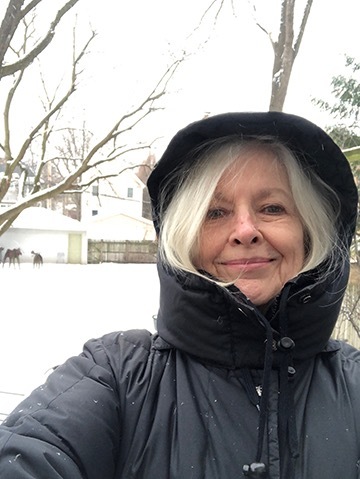

I bought “Big Guy” the day my hair froze the first winter I lived in Chicago. Big Guy is a calf-length, black, down, Eddie Bauer coat. It zips up the front, has a hood that draws tightly around my face, and is good for weather down to -40°. Big Guy is thirty-seven years old this winter.
It was 1982 and my husband, kids, and I had moved here from Texas over the summer for me to attend graduate school. We lived on the top floor of a three-flat in Roger’s Park, in the middle of the block on Pratt Avenue, east of Sheridan Road. Our street dead-ended on Lake Michigan. My campus was downtown Chicago, and every morning I walked a block and a half to the bus stop on Sheridan Road and took the 147 Outer Drive Express to the city.
I don’t remember what hair styles were popular in Chicago in 1982, but I was a “Texas girl” and my naturally fine, straight hair had been permed into submission earlier that summer before moving north. Every morning I got the kids up and dressed, and while they ate breakfast, I took my shower. The remnants of my Texas girl perm made it fast and easy—step out of the shower, towel-dry, scrunch, and go.
The morning my hair froze was late fall and, although the weather was getting colder, I had yet to shop for a serious winter coat. That day the temperature had plummeted overnight and wind was whipping wildly off the lake. Suddenly, my hair felt like tiny twigs scratching my cheek. I touched it and was shocked. In the time it took me to walk to the bus stop and wait a few minutes for the bus, my hair had frozen solid.
Boarding the bus, I avoided eye-contact because I wasn’t sure if my hair looked as strange as it felt. I hurried down the aisle imagining I looked like Medusa. Finding a seat at the back of the bus, I gently touched my hair, afraid it might break. I blew on my hands and carefully cupped each individual strand until it thawed. Then I prayed it would all dry before I reached campus.
After school, I walked to the Marshall Fields department store in Water Tower Place on Michigan Avenue. Having talked with other women experienced in Chicago weather, I already knew what I wanted—a long, black, down coat with a hood.
In the coat department I immediately found my coat. It wasn’t hanging from the circular rack, like the others. It was on a hanger, but laid over the top of a rack. I took it off the hanger and tried it on. It was exactly my size and exactly what I wanted. The only thing missing was a price tag.
“How much is this coat?” I asked the two saleswomen at the cashier’s desk. “I can’t find a tag.”
They examined the coat, and one pointed to the label. “This is an Eddie Bauer coat. We don’t sell Eddie Bauer.” They checked the pockets, looked at the lining. The coat was obviously brand new. “Someone must have left it here.” We looked around, but there were no other shoppers in the coat department. “Where did you find it?”
I showed them the rack, and, because it was on a hanger, the women concluded that it had been traded for another coat from the rack. This was long before security tags or computers. It would have been easy to make a switch and walk out of the store. “Sorry,” said one of the women, shrugging. “We don’t sell Eddie Bauer here.”
Still, I persisted. “But what if I want this coat? How much would it cost?”
The women looked at each other and seemed to come to a silent agreement. One went to the coat rack and looked through the other long, black, down coats examining the tags. “Sixty dollars,” she said.
I bought it on the spot. How could I not? It might be magical thinking, but I’ve always believed the coat was meant to be mine. Maybe I conjured it. Maybe something else was in force to put me there at the right place at just the right time. I’m sure no other coat I pulled from the rack would have lasted this long.
Big Guy has served me well over the years. All through graduate school and internship, whenever I took public transportation and found myself waiting at a bus stop or on an el platform in freezing weather, I was grateful for the comfort and warmth it provided. A scarf, down mittens, and tall insulated boots were all the additional equipment I needed to safely navigate Chicago’s ice, wind, and snow.
I named it “Big Guy,” because Southerners tend to name inanimate objects (and old habits die hard), and because it got the job done. Over the years I’ve accumulated lighter coats and jackets, and even a dressier down coat, but I still keep Big Guy for the worst weather. Because of my Eddie Bauer, I’m can take long walks to the lake mid-winter instead of being trapped inside. And it’s a great spare when my BFF Tanya visits from Arkansas.
Although slow in arriving this year, winter weather has now hit Chicago with a vengeance. At this moment, it’s 11° and 24° is today’s predicted high. Right now the wind-chill makes it feel like -5°. Two days of snow hides patches of treacherous black ice awaiting a careless step. But it’s all good—I’ve already pulled Big Guy out of the closet. After thirty-seven years, it’s a little worn for wear, but Big Guy still gets the job done.
October 31, 2019
Repost: Hope and Action
As another October comes to an end, I invite you to read a repost of “Hope and Action.” Originally published on October 22, 2012, it was my very first blog post and details my first experience with breast cancer. At that time, I was a ten-year survivor. Since then, I’ve have written nine more posts (listed below) describing my two recurrences and what life is like as a breast cancer fighter/survivor.
Even during the pink-ribbon-festooned month of October, the fear of breast cancer is so great most women cannot bring themselves to conduct self-examinations or schedule mammograms. My mission, in sharing my personal experiences, is to enlighten readers as to all I’ve learned so far, inspire those women whose fear has kept them from scheduling screenings to be brave and do so (Mammograms have saved my life three times in the past seventeen years.), and empower those walking a journey similar to mine to take my hand and keep going…we can walk together.
Most everyone knows someone whose life has been touched by breast cancer. I hope my stories can help you or someone you love.
If you wish to read more about my personal experiences, here are the links to nine more posts in the order in which they were written:
A Tribute to My Best Forever Friend
Life Lessons I’m Learning from Cancer: Lesson One
Life Lessons I’m Learning from Cancer: Number Two
I didn’t realize what a daunting task it would be when I decided to write my very first blog in October on the topic of breast cancer. The original idea came from a celebratory place—on Friday, September 28, I had my yearly diagnostic mammogram and was declared cancer free. I am now a 10 year survivor—which puts me in the 82nd percentile of women who make it this long.
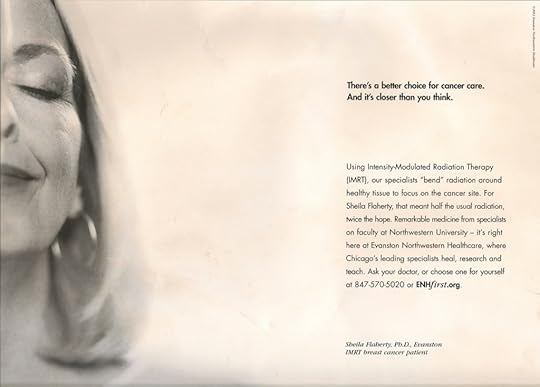 Evanston Northwestern Hospital Breast Cancer Treatment Advertisement. Photo & Advertisement © 2003, ENH
Evanston Northwestern Hospital Breast Cancer Treatment Advertisement. Photo & Advertisement © 2003, ENHIn the past 10 years I’ve walked for hope, run for hope, spoken about hope, and even been in an ad campaign about hope. And now, I want to write what may inspire hope— for those going through what may feel like the scariest and loneliest ordeal of your life.
I have much to say, but there is already so much out there. There is certainly no need to remind anyone that October is breast cancer awareness month—everything is festooned with ribbons the color of a new scar.
As survivors our stories are all unique and all similar—the terror, the tears, the pain, the awkwardness in ourselves and others. I’ve learned that when you tell people you had breast cancer most of them reflexively glance at your chest! Although many women would argue that every month is breast cancer awareness month—as the fear is always in the periphery of our minds—there is a need for it to be so in our faces that we cannot hide beneath layers of fear and denial that it can happen to us. We cannot just hope it won’t happen to us or to women we love, we also have to take action.
I have long known I was at increased risk for breast cancer. It was 1972 when my mother sat me down to talk. I was 24. Mom was pale and trembling, and I had never seen her eyes so desperately sad. The story was that she had been pregnant once before me and she had miscarried.
During her pregnancy with me, mom was prescribed diethylstilbestrol (DES), the first synthetic estrogen hormone. DES was created in 1938 and was regularly prescribed for “problem pregnancies” until November 1971, when the FDA told doctors to stop prescribing it for their pregnant patients.*
We, the female children born of those pregnancies, are called “DES Daughters.” We are at increased risk for a number of health issues including cervical cancer, structural changes of the reproductive tract, infertility, and depression. Those of us over 40 are almost twice as likely to get breast cancer, and the relative risk is estimated to be even higher for DES Daughters over age 50.
By 1972, articles were being published describing the outcome of long-term studies of the effects of DES. Mom had read one of those articles.
“I’m so sorry I did something to put you at risk.” Her eyes filled with tears. “I was so afraid I’d lose you.”
Of course I understood. 1948 was a time when no one, especially women, questioned their doctors. DES seemed like a miracle drug—the answer to prayers for those longing for babies. I comforted Mom with gratefulness at being alive and reassurances that I would be just fine. Four years later, at age 28, I was diagnosed with cervical cancer and successfully treated with conization surgery.
In my early forties I developed fibrocystic breast condition, characterized by lumpy, painful breasts. Self-exams became an exercise in terror. Around that time I had a patient who also had the condition. She raved about her breast specialist, a surgical oncologist, exclaiming, “I will pay him to examine my breasts for me.” I thought, “This is my man,” got his name, and made an appointment. Dr. Stephen Sener turned out to be the man who saved my life.
Over the next ten years I had a number of fine needle aspirations of suspicious cysts, two hollow-core needle biopsies, and the surgical removal of a lump. Every time I waited with dread for the nurse to call with the pathology reports—which always came back benign.
In October 2002, that wasn’t the case. My routine mammogram found a suspicious area and another hollow-core biopsy confirmed malignancy. On Friday afternoon, October 25, Dr. Sener called with the news I had always feared—and I came undone.
The following Tuesday, October 29, I had a lumpectomy. After the pathology reports came back, my final diagnosis was ductal carcinoma in situ (DCIS)—the most common type of non-invasive breast cancer. The cancer was microscopic and therefore would not have been discovered without a mammogram. The chances of recurrence of DCIS are 30% and most happen within 5 to 10 years after the initial diagnosis. DCIS isn’t life threatening in itself, but having it increases the risk of developing invasive breast cancer later on. To lower that risk I was advised to have radiation therapy.
I qualified for and chose the option of the brand new (at that time) Intensity-Modulated Radiation Therapy (IMRT). Since this radiation focused exclusively on the cancer site, I only had to go 16 times, instead of the usual 32. I went to the Kellogg Cancer Center at Evanston Hospital where a team of lovely women—my “radiation angels”—measured where the radiation beams should go, permanently marked my chest, and worked hard to save my life while I stared up at the picture of a Ragdoll kitten taped on the machine. They kindly scheduled my appointments at 7:30 a.m. so I could keep my usual work schedule. I never missed a beat, and none of my patients knew what I was going through until long after the fact. Working was what kept me (relatively) sane.
There were months of extreme fatigue and distorted sense of smell and taste—all the usual side effects of radiation. Not to mention depression, abject terror, self-pity, and many, many sleepless nights. But the total love and support from my husband, family, and friends helped get me through.
After radiation therapy was completed, I was prescribed Tamoxifen which is supposed to prevent breast cancer. I stopped taking it when the immediate and long-term side effects began to outweigh the potential benefits. I figured that twice a year diagnostic mammograms would be enough to catch any cancer that might return. Fortunately, I was right.
After 5 years, my diagnostic mammograms were reduced from twice to once a year. After 10 years, I’m left with a scar that has faded to white and one tiny black dot in the middle of my chest that I refer to as my tattoo.
In the intervening years, I’ve exercised and focused on a healthy diet, choosing mostly organic fruits and vegetables and dairy. I have limited meat and stayed away from anything that has hormones or additives of any kind. I drink gallons of green tea in a week, and still enjoy red wine in moderation.
I admit that my yearly mammograms still fill me with terror and dread. And I find it ironic that I’m not allowed to wear deodorant on the one time a year I need it the most. But during the actual procedure I find comfort in focusing on the date of inspection on the mammogram machine—March 11—my mother’s birthday.
Because psychologists know that hopelessness combined with helplessness is an often lethal combination, I professionally and personally contend that when all else seems out of our control, it becomes our responsibility to do whatever is within our power. To my women readers, take action! Know your risk, including your mother’s possible use of DES. Do self-exams and have regularly scheduled mammograms when recommended. (Remember, a mammogram saved my life!) To all my readers, action in the form of good self-care and education to increase awareness is the only way to create more hope—for ourselves, the women we love, and future generations of women.
Since, for me personally, the wolf will always be at the door, I will keep doing what I have been doing—it has worked so far. On September 28, 2012, I became a 10-year survivor! On October 6, 2012, I danced at my son’s wedding! Life is beautiful.
*Although doctors were told to stop prescribing DES in 1971, it wasn’t banned for use with humans until September 2000. Therefore, an estimated 5-10 million people in the United States were exposed to DES, including pregnant women and the children born of those pregnancies. DES sons and grandchildren are also at risk for health issues caused by DES. Read more about DES to find out about your risk or the risk or someone you know at www.desaction.org.
April 7, 2019
Telling It How It IS
 Cancer is with you forever.
Cancer is with you forever.
~Shannen Doherty
This Saturday, April 6, marked the anniversary of my mastectomy. The test results are in and, once again, I’m a one-year survivor. It’s a funny place to be. You might think it would be all champagne and roses. Or a fist pumping, “Whoo hoo! I kicked cancer’s ass!” But it’s not either of those.
It’s a quiet sigh of relief for having good news this time around.
It’s gratitude for having made it through one of the hardest years of my life, and for all those who’ve been on my journey with me.
It’s a renewed commitment to continued healthy living.
And, it’s a time of reflection—what I’ve learned and continue to learn from the experience of cancer. What I want to pass on to others who are traveling the same path or who love someone who is.
Breast cancer is definitely a “Yes, AND” experience. YES, I’m grateful I’m cancer free for now, AND cancer has changed my life forever in negative ways and positive ways. YES, I’m learning to live with my new normal, AND I want my old life back.
The reality of being a breast cancer survivor is that you’re never really done with it, even when you do every single thing you can. In January I had an elective partial hysterectomy, called an oophorectomy, to remove my ovaries and fallopian tubes—just in case. Now, at least, I never have to worry about getting ovarian cancer.
And I’m on a medication called Letrozole that’s supposed to help prevent recurrence. Side effects include, but are not limited to: hot flashes, hair loss, dry skin, joint/bone/muscle pain, severe muscle cramping, arthritic symptoms, fatigue, unusual sweating, nausea, diarrhea, dizziness, mental/mood changes such as depression and anxiety, and insomnia.
I’ve had a number of these, mostly the joint/bone/muscle pain and muscle cramping. And fatigue and insomnia, which go hand in hand. But, hey! Letrozole can help save my life, so I’ll keep taking it as long as necessary.
As for other people in my life, it’s been a year and many assume I’m all better. The short answer to that is “no,” I’m not all better. I’m still grieving, and I live with the fear of recurrence. I’ll never be all better, but right now I’m cancer free. Right now, I’m good.
A few posts back I wrote about lessons I’m learning from cancer. This is lesson three: (Warning: It’s not all cheerful, but it’s true!)
Cancer is a thief. It robs you of whatever body parts need to be lopped off or maimed in the interest of stopping it. It robs you of your dignity. It robs you of your appetite, sleep, energy. It robs you of your joy and peace of mind.
Cancer robs you of your zest for life. It steals your creative energy, robbing you of the joy you once found in your art. It robs you of your dreams. Plans. Possibilities. Play. It steals your sense of humor.
Cancer robs you of relationships, when those who love you cannot bear to reach out, because of their fears of losing you. Or confronting their own mortality. Or when you have no energy to reach out, or back to those who are reaching for you.
Cancer is exhausting—physically, mentally, emotionally. It robs you of the energy necessary to complete the most mundane of activities. You barely shuffle where you once danced. You search for ways to quiet your mind—which will not be still. You fight fears and tears—or you give in to both.
Cancer robs you of certainty. What was once a “hell yes!” Becomes a “maybe,” or “we’ll see.” It robs you of confidence—in your appearance (I look like hell!)—in your ability to make promises or plans you aren’t confident you’ll be able keep. You become tentative. Will I feel well enough? Will I have slept? Will I be too tired? All valid questions.
Mostly, cancer robs you of innocence. We all know we’re going to die—in some abstract, vague, “one of these days” kind of way. Cancer puts a hard stop to any thoughts of living long. Instead, it fills you with trepidation and “what ifs.” Cancer insists on your reckoning with mortality.
YES, it’s all true, AND I’m ever determined to take back whatever I can!
What I long for most is to regain the feelings of robust health, vitality, and joy I had before all this began. YES, I want to be able to seize the day and experience life to the fullest, AND I get so tired and now have a hesitancy I never had before.
AND, I will keep trying. I’m still meditating, exercising, and eating well. I’m still loving and taking solace my work. Now that I’ve passed the one-year mark, I’m making travel plans I didn’t dare make before.
And, thanks to an angel working overtime on my behalf, I’m back at Ragdale, my home away from home. I’ve been given the extraordinary gift of time and space and I’m gratefully using it well. Already, in a week, I’ve written more than I have in the past two years. Orchard Road, my novel in progress, is taking shape nicely.
YES, it continues to be an arduous ride, AND I’m grateful for every moment I have left. I’m not all better, but I’m determined to be more than okay.

